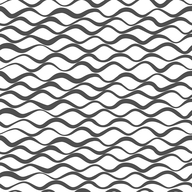High Thermal Conductivity Polyionic Polymers for Electronic Device Encapsulation and Heat Dissipation
TECHNOLOGY NUMBER: 7311

OVERVIEW
Versatile method to increase the thermal conductivity of most polyelectrolyte polymers- Dramatically increased thermal conductivity without any fillers or additives
BACKGROUND
High thermal conductivity is an important quality of polymers for applications in which heat must be dissipated efficiently (e.g. LED packaging, electronic devices). Low thermal conductivities in bulk polymers are believed to occur due to entangled structures, which exhibit significant void space and weak interchain interactions. Blending with high-conductivity fillers such as metal or ceramic particles, carbon nanotubes (CNTs), or graphene flakes is the most commonly used method to enhance thermal conductivity for polymeric materials. Unfortunately, this approach results in a tradeoff of undesirable optical/electrical properties, increased weight, high cost, and ease of processing. As such, the need exists for an improved design of bulk polymers.
INNOVATION
Researchers at the University of Michigan have developed a generalizable method to increase the thermal conductivity of a bulk polymer. The strategy utilizes the repulsion of electrostatic charges on polyelectrolyte polymers to straighten the individual chains so that they can align in parallel fashion. Bulk polyelectrolyte polymers comprising an ionizable repeating pendant group are contacted with an aqueous liquid having a pH that ionizes the pendant group and isotropically extend the polyelectrolyte polymer to a straightened, non-globular chain conformation. The polyelectrolyte polymer so treated thus exhibits a thermal conductivity that is significantly greater than the untreated, amorphous polymer. In some cases, the resulting thermal conductivity can exceed 1 W/m ∑K, which is rare for bulk polymers.